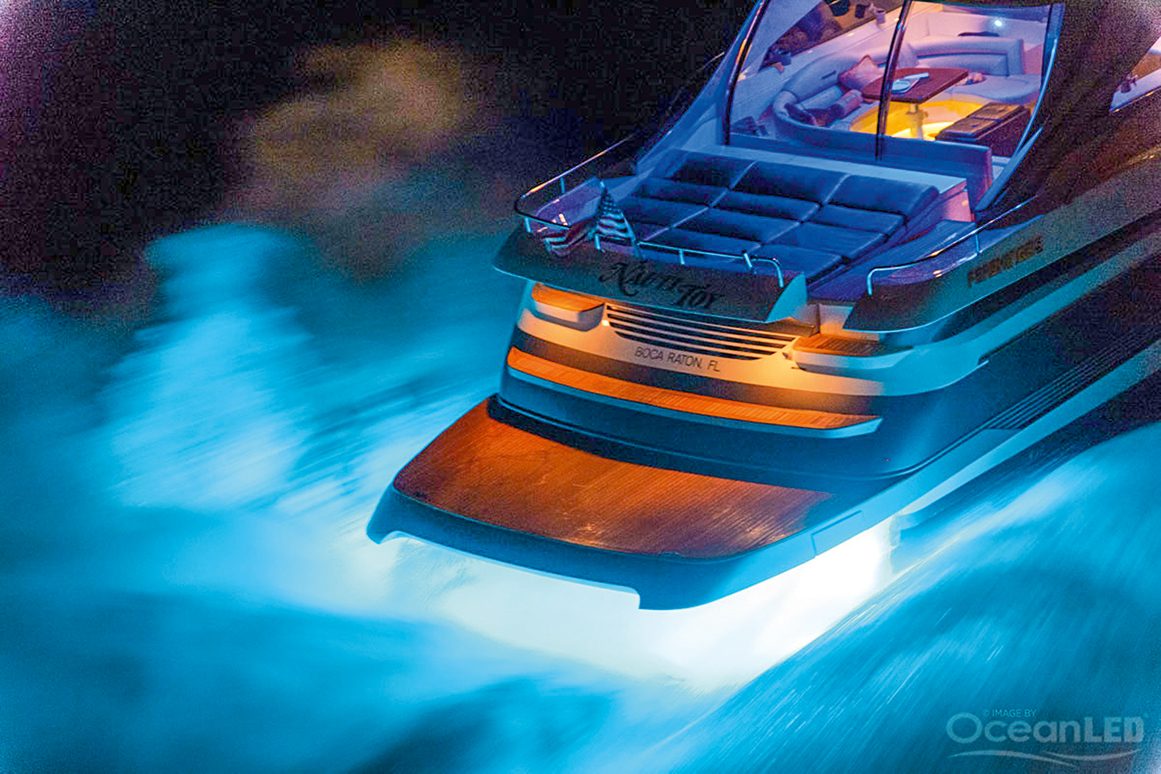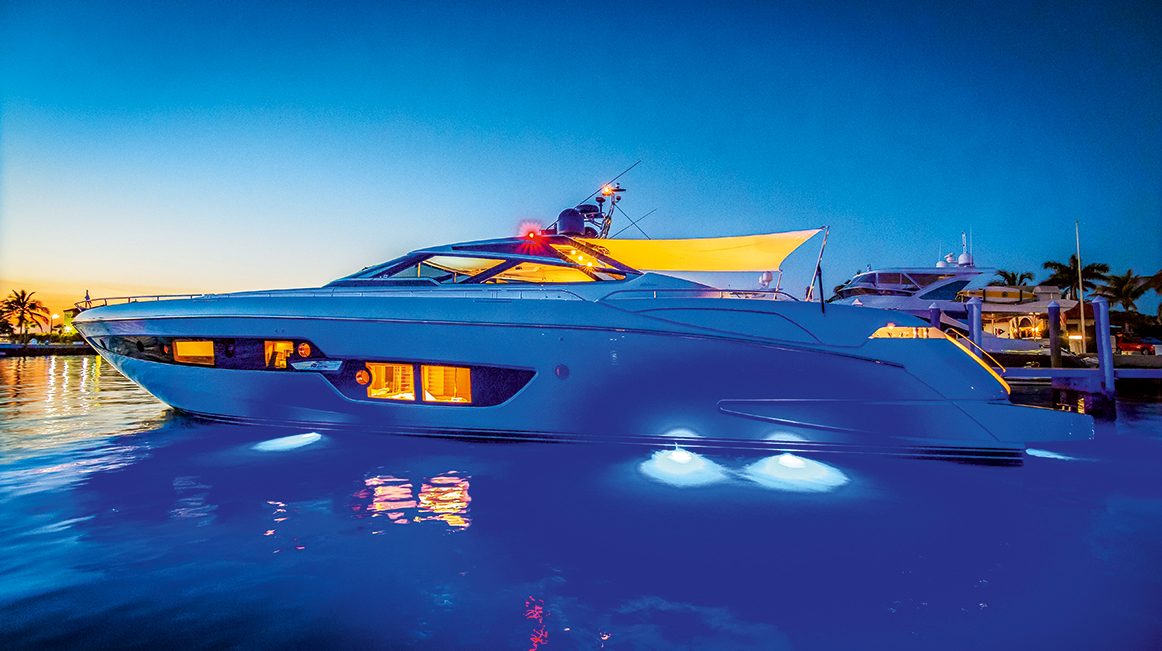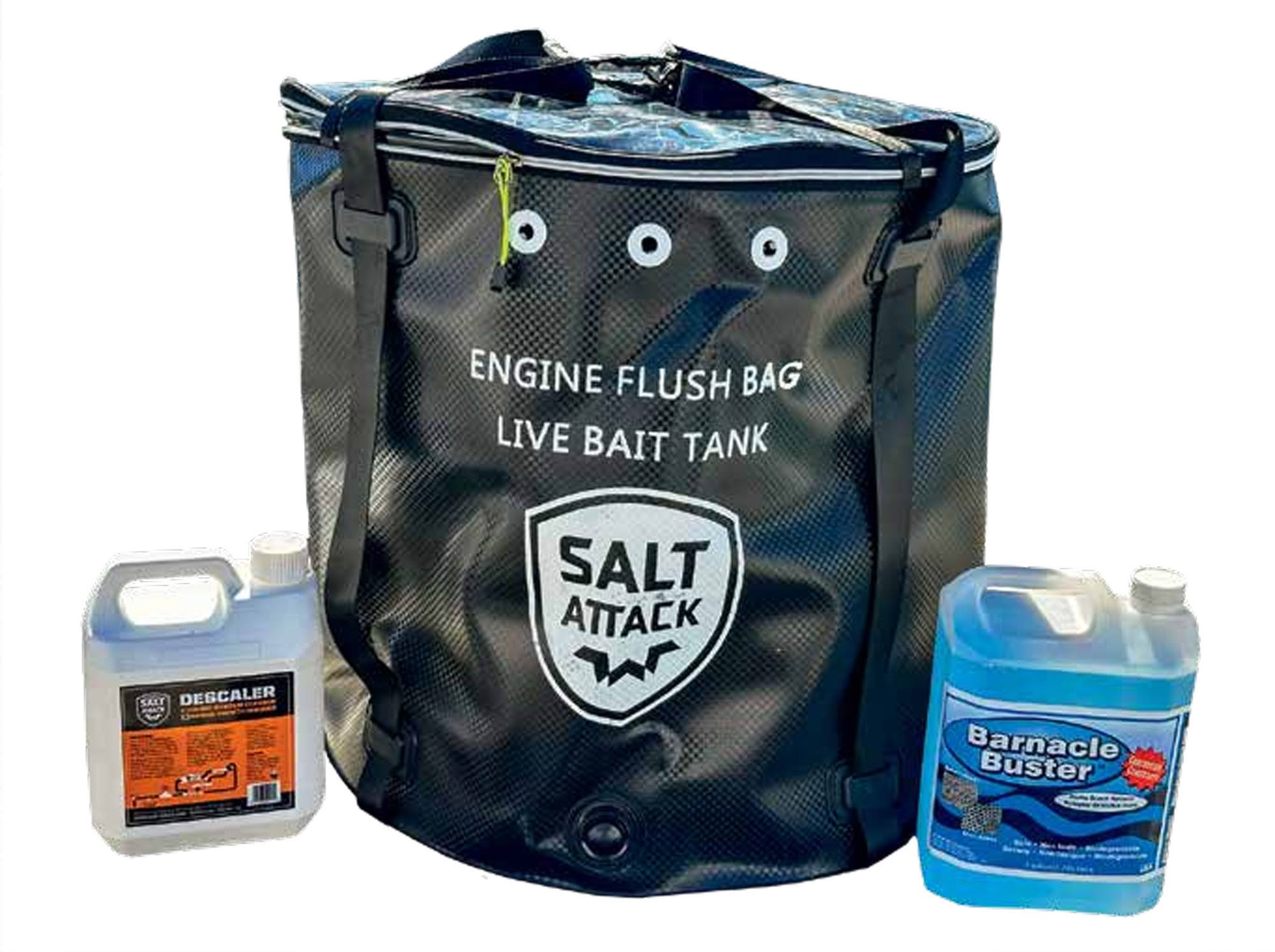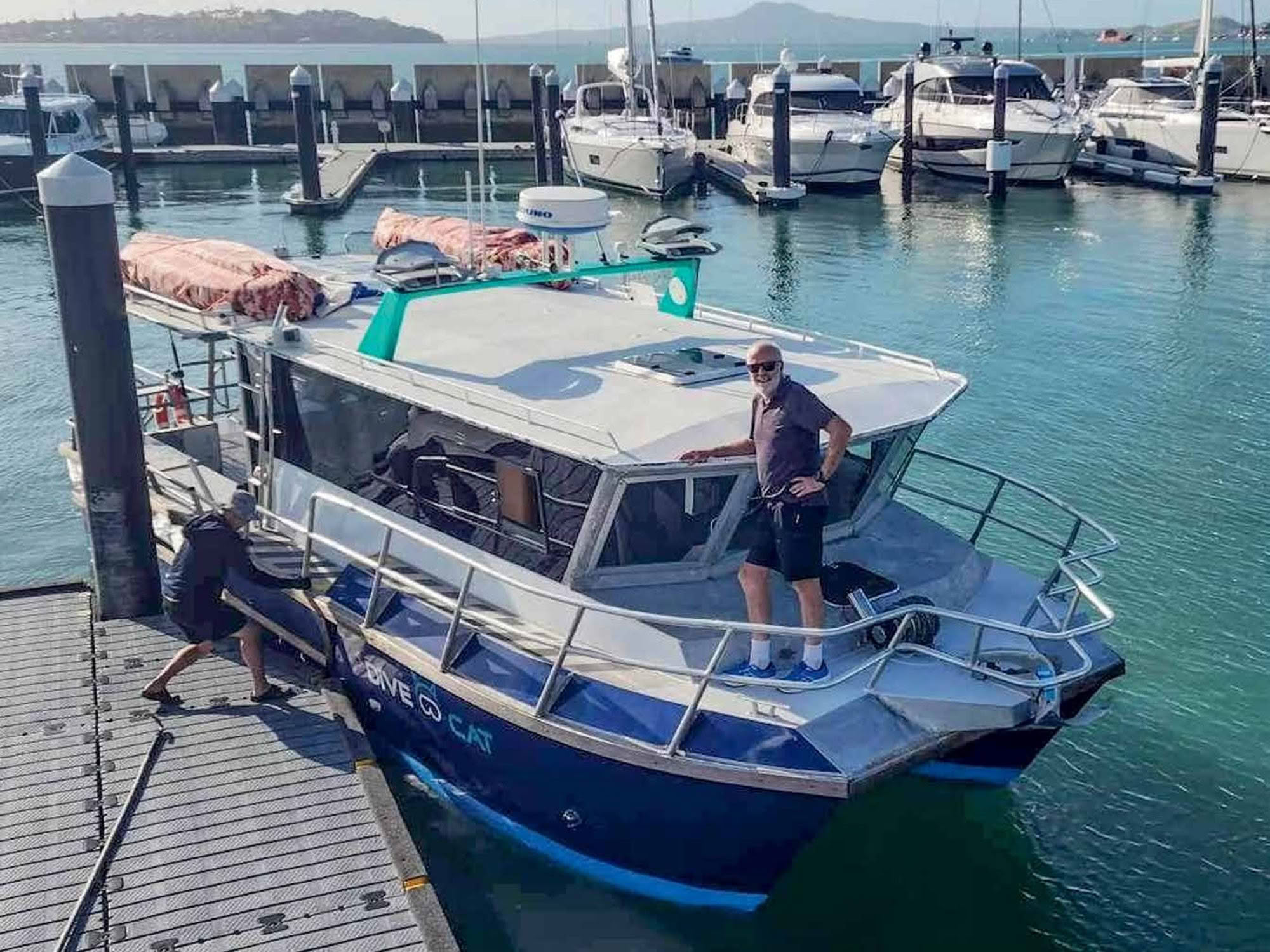

Boaties who stay out after sunset know that a whole new world opens up in the dark. Different marine creatures appear and if you’re keen on catching squid – well, they’re attracted by lights like moths to a candle.
The key, of course, is having the right lights. While navigation and safety lights are a legal requirement (and are usually installed when boats are manufactured), underwater lights are a completely different matter.
Firstly, the underwater environment is extremely harsh, so poor-quality products won’t last very long. More importantly, safety is an issue: electricity and saltwater don’t mix and getting this wrong can cause serious damage. And drilling a hole through the hull for a light fitting or cable opens up a whole range of potential issues around leaks and flooding.

There are other considerations – options vary depending on the size/type of boat and its construction material. And because of that old enemy, galvanic corrosion, metal boats have their own particular set of requirements. Trailer boats are typically used intermittently and owners can arguably consider a slightly less robust solution, whereas with a launch or yacht owners need to ensure that whatever fits through the hull is at least as robust as the hull itself.
Another consideration for underwater lighting is the brightness. Intense lights generate a fair bit of heat but an underwater light, fortunately, is cooled by the water so a much greater light density is possible than with air-cooled units such as deck floodlights.
Be aware though that many underwater lights can’t be turned on, even for a minute or two, while they are out of the water as they will rapidly overheat and potentially fail. The better models incorporate a thermal cut-out, to reduce intensity or turn off the light before any damage occurs.

All this comes at a price, and while the cost of some higher-end units is eye-watering it needs to be seen in perspective. Smaller and cheaper lights may deliver as few as 120 lumens of light, while some of the top-end, bronze-bodied units provide well over 6000 lumens (a more than 30x difference in light output).
In general, if a light’s specifications only has general terms like ‘high-power LED’ but doesn’t explicitly state the output in lumens (and especially if it costs less than $100) it will probably be at the lower end of the scale.
The new technologies also allow for different colour outputs. Although white light is ‘normal’, we know that blue light travels further underwater (blue is the last part of the spectrum to be absorbed) and so blue lights give a bigger pool of light in the water. Note that many fish cannot see red light, so these allow viewers to watch what the marine creatures are doing without their behaviour being influenced by the light.
Multi-colour units are becoming increasingly popular, where blue or white light can be used initially to attract fish to the boat. Since many fish tend to hang back just at the edge of the bright circle, the colour can then be switched to red to watch them behave more normally. This can produce some amazing interactions with fish.

Keen to fit a pair of lights to an 11.5m aluminium catamaran, we explored the range available in New Zealand. The simplest option is an LED Bung light – available from a number of chandlers and online suppliers.
Installation is simple: you simply remove the existing bung surround and fit the new unit, with appropriate sealant. The cable comes through the inside of the bung and is run to a suitable power source. The unit still works as a bung and can be easily unscrewed to drain the boat. For ease of installation make sure the unit’s diameter matches the size of your current bung.
These units are cheap and low-risk as they don’t require drilling new holes. But because of the small space available they are limited in power output and usually contain just one or two LEDs. Because they have a plastic body there is no issue with corrosion in aluminium hulls.
One step up are surface-mount multi-LED units. These come with either plastic, stainless steel, aluminium or bronze bodies, and vary quite widely in price and power output. Many of the lower-end units retail at under $100 with an output of less than 200 lumens. To put this in perspective, this is about as much light as you get from the bulb inside your fridge and will most likely result in disappointment.
A decent output is upwards of 1000 lumens for the average runabout, and the market price is between $200 and $400. The Bluefin Piranha P3 light, imported by Lusty and Blundell, is available through most marine chandlers. It outputs 1550 lumens and has a list price of $389.
It is available in white, green or blue and has a low-profile, surface mount suitable for attaching to the transom or side of the hull. Bluefin uses Osram industrial-strength LEDs – they are intensely bright and have a consistent colour output. The unit incorporates optical-grade polymer lenses to evenly distribute the light, and draws just 1.2 amps.
The unit’s body is machined from a single block of either marine bronze (for fibreglass or wooden boats) or alloy with a hard PTFE anodised coating to prevent corrosion between the hull and light. This second option was developed for the local market due to the Kiwi love of aluminium boats and comes in a kit with full installation instructions and all the connection hardware.

For a larger vessel consider something like the Bluefin Piranha P6, retailing just under $700, again a surface-mount unit but with a total output of 3500 lumens. This is about the same light output as a 200-watt incandescent bulb, although the LED only consumes about 40 watts (3.5 amps on a 12-volt system).
The LEDs have a life expectancy of around 50,000 hours and different shade options are available including cobalt blue, sapphire blue and emerald green. There is also a model that allows the user to switch between colours, using a simple toggle switch. Quickly flicking the switch off and then on again allows you to scroll through the colours, or strobe in the colour you have selected. And at the top of the range are through-hull bronze fittings outputting over 6000 lumens.
We also checked out the THX-403 from Electronic Navigation Ltd. It combines white and blue output into a single unit and can be switched between these colours. It outputs 6800 lumens. A low-profile unit, it has the strength of a through-hull fitting and can be fitted to the hull sides or bottom of high-speed vessels.
These units can be serviced from the inside the hull without having to remove the vessel from the water. With their proprietary switch fitting they can easily switch between colours, fade colours, adjust the brightness, and strobe in two speeds. This is a premium unit retailing at just over $2000 and comes with a three-year warranty. An extra isolation sleeve must be fitted if it is being installed on an aluminium hull.

We opted for the Bluefin Piranha P3 and we wanted a Cobalt Blue light for each of the two hulls. The installation instructions recommend mounting them at least 30cm from any anodes and 20cm to 30cm below the water surface.
Installation was really simple, taking less than 20 minutes per light. The supplied drilling template allows the holes to be positioned precisely, and the screws are hand-tightened in place with suitable sealant around the edge of the light. The power wire feeds up through a centre hole and is connected to a waterproof fuse holder.
A suitable switched power source is then connected to the light using a gel-encased connector, with all the connectors and fuse holder provided in the kit. Even allowing time for feeding the wire from the helm, we had both lights installed and working inside an hour.
We put the boat back in the water that evening and the light output was amazing – a nice even and bright spread of blue light, angled out from the stern of the boat. Now we need to schedule a night-time trip to try them out…




